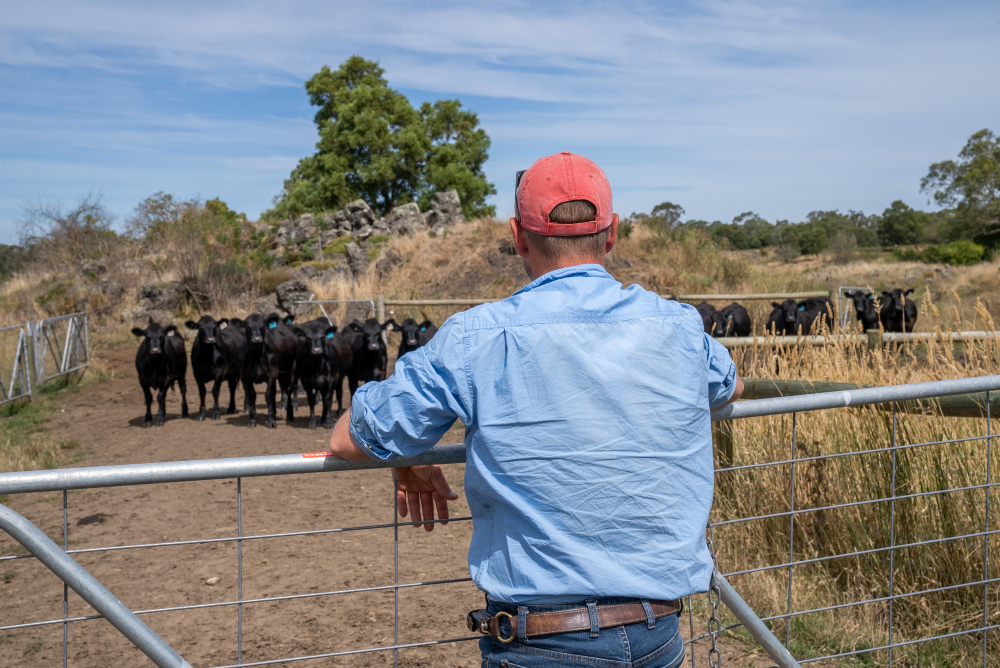Flock forecast to rise in 2026
After two record breaking years of sheep and lamb production, supply has already started to slightly contract so far in 2026. There are plenty of...
2 min read
Alexandra Snape : Oct 22, 2024

The change of residence that comes with livestock purchases is a significant stressor, regardless of age or type.
However, the negative impacts can be reduced through proper management before, during, and after the cattle's arrival.
Acclimation is a key practice that helps cattle settle into their new environment, allowing them to recover from stress and resume essential activities like resting, rehydrating, and ruminating sooner.
Acclimation, commonly practiced in feedlots across North America and Australia, is both a concept and a procedure that varies based on the behaviour and condition of the cattle and the available infrastructure.
Before the cattle arrive, prepare the unloading area. For quarantine purposes, use an area separate from other livestock, and ensure it can be easily cleaned.
Agriculture Victoria recommends isolating new cattle for at least four weeks to allow for acute health problems to appear, thus preventing disease spread to the existing mob and risk of weed seed spread on your property.
Veterinarian Dr Kev Sullivan likens introducing new cattle to welcoming guests to a five-star hotel. Handling starts with careful unloading, ensuring cattle are greeted quietly and calmly.
Provide high-quality roughage and fresh water as a priority and ensure there is sufficient clean and dry space to lie down.
Clean and refill the water trough to ensure the cattle are aware of the water source. Allow them to rest for the remainder of the day and night to recover from the stress of transportation.
After resting, begin handling the cattle in a controlled manner through your yards and races. This early handling establishes a routine, helps with future handling and further cements the idea of home.
Enter the pen, ensuring all cattle are standing before initiating any movement. Gently push them into a corner, giving them space to remain together as a group. Once settled, move the group to another corner, holding them there before guiding them back.
Repeat this process to build familiarity with your presence.
You can gradually increase the complexity of the handling by moving them through smaller pens or introducing more space for controlled interaction.
The goal is to create calm movement, encourage the cattle to respond to pressure, and allow them to "park" when asked.
Keep training sessions short, around 15 minutes, and always finish on a positive note, parking the cattle on feed and water before you leave.
When the cattle are ready for the paddock, guide them similarly to how you handled them in the pens. Bunch them loosely in a corner and move them calmly around the pen before heading towards the paddock.
This shouldn’t be difficult or stressful if you’ve established a working relationship together through the early handling. Once there, walk the mob to the water source and hold them there.
Allow the cattle to spread out and settle, giving them space to graze and rest. If you notice any animals walking away, gently push them back. Leave the mob when you are satisfied.
In the following days, if there are any uncertain animals pacing or if the mob has taken to running, go back out and acclimate them again – gather into a mob, hold, take for a walk, then park. Repeat as necessary.
Implementing a structured acclimation process helps cattle to settle quickly, encouraging them to resume essential activities like grazing, resting and ruminating sooner.
Animals who feel safe in their environment thrive, resulting in less stress, faster recovery, healthier animals, and ultimately better weight gain and increased profitability.
Alexandra Snape is an accredited Australian stockperson and a Stockmanship Consultant at Chelsea Livestock Services.
.png)
After two record breaking years of sheep and lamb production, supply has already started to slightly contract so far in 2026. There are plenty of...
.png)
Cattle markets have begun 2026 in similar fashion to how 2025 ended now that regular trading has recommenced.
.png)
With commercial cattle sales wrapped up for 2025, AuctionsPlus’ Q4 results are in. We take a look at which regions recorded the biggest shifts in...